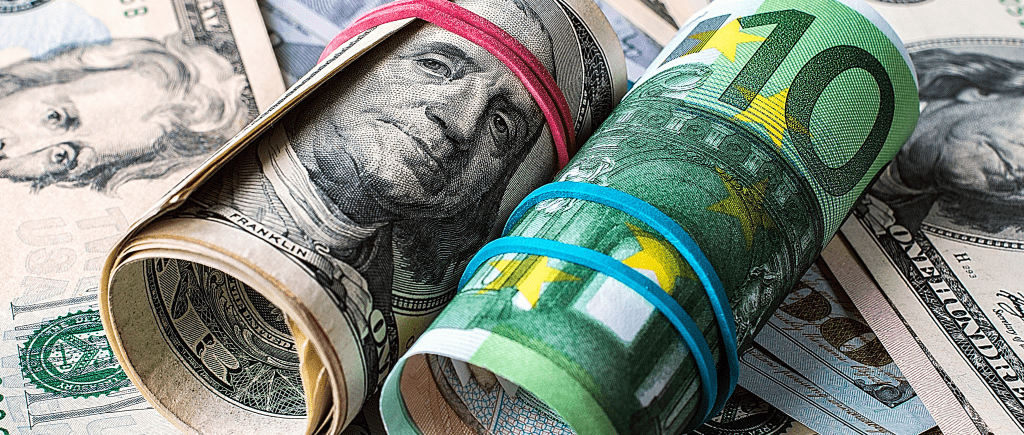The euro has lost ground against the US dollar after reaching a high above 1.1100 earlier in the day. However, it’s still slightly up due to expectations of a Federal Reserve interest rate cut. The US dollar’s next major catalyst will be the August US Non-Farm Payroll report on Friday. The European Central Bank is almost certain to lower interest rates this month.
The euro gave up most of its intraday gains after hitting resistance at 1.1100. The US dollar strengthened following the release of unexpectedly strong US ISM Services Purchasing Managers Index (PMI) data for August. The US Dollar Index, which measures the greenback’s value against six major currencies, recovered after finding support near its daily low.
The ISM Services PMI report showed that activity in the services sector expanded at a slightly faster pace in August compared to July. However, the broader outlook for the US dollar remains negative due to weak US ADP Employment Change data, which has increased concerns about declining labor demand.
Fed Rate Cut Expectations Surge on Weak US Private Employment Data
Market Speculation Intensifies
The recent release of weak US private employment data has ignited a surge in market expectations for an aggressive interest rate cut by the Federal Reserve (Fed). This shift in sentiment has significantly weighed on the US Dollar (USD), as investors anticipate a more accommodative monetary policy stance.
Focus Shifts to Nonfarm Payrolls
To gain further insights into the current labor market conditions, investors are keenly awaiting the release of the August US Nonfarm Payrolls (NFP) data on Friday. This crucial economic indicator will provide valuable information on job growth, unemployment rates, and wage pressures, which could significantly influence the Fed’s decision-making process.
Euro Strengthens Despite Retail Sales Decline
The Euro (EUR) has exhibited remarkable strength against its major peers, even in the face of a surprising decline in annual Eurozone Retail Sales for July. While the monthly Retail Sales data showed a modest increase, the overall trend indicates that consumer spending remains subdued.
ECB Rate Cut Anticipation Grows
The weak Eurozone household spending has fueled speculation that the European Central Bank (ECB) may resume its policy-easing cycle this month, following a pause in July. With persistent concerns about poor growth prospects and easing inflationary pressures, ECB officials have expressed a strong inclination to cut interest rates. ECB Governing Council member François Villeroy de Galhau has publicly stated his support for such a move, citing the need to address Europe’s sluggish economic growth.
Eurozone Economic Concerns Deepen
The final estimate of the HCOB PMI report has further exacerbated Eurozone growth concerns, revealing a slower expansion in overall economic activity compared to the flash reading. While the Composite PMI showed moderate growth, the service sector’s expansion was tempered by a continued contraction in the manufacturing sector.
The recent economic developments have significantly increased market expectations for interest rate cuts by both the Fed and the ECB. The weak US private employment data and subdued Eurozone Retail Sales have created a favorable environment for more accommodative monetary policies. As investors await the release of key economic indicators, the global currency markets will likely remain volatile, reflecting the uncertainty surrounding central bank actions and their potential impact on economic growth.

 Noor Trends News, Technical Analysis, Educational Tools and Recommendations
Noor Trends News, Technical Analysis, Educational Tools and Recommendations




